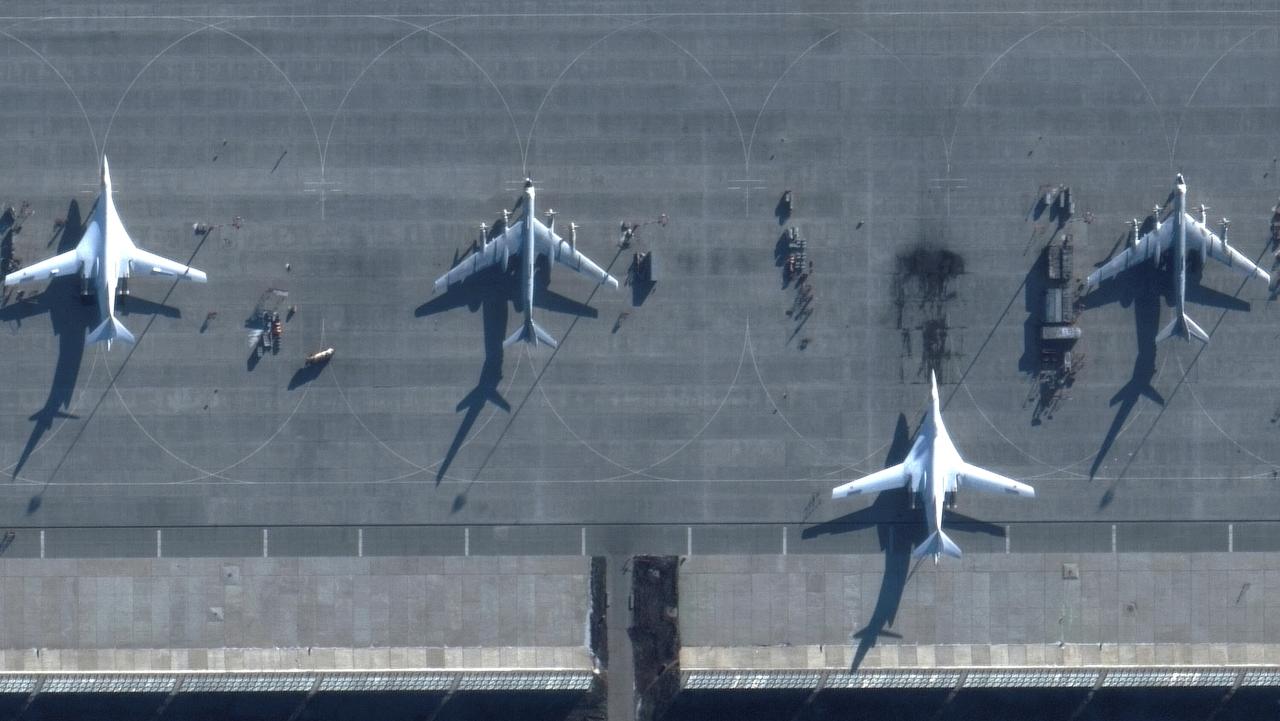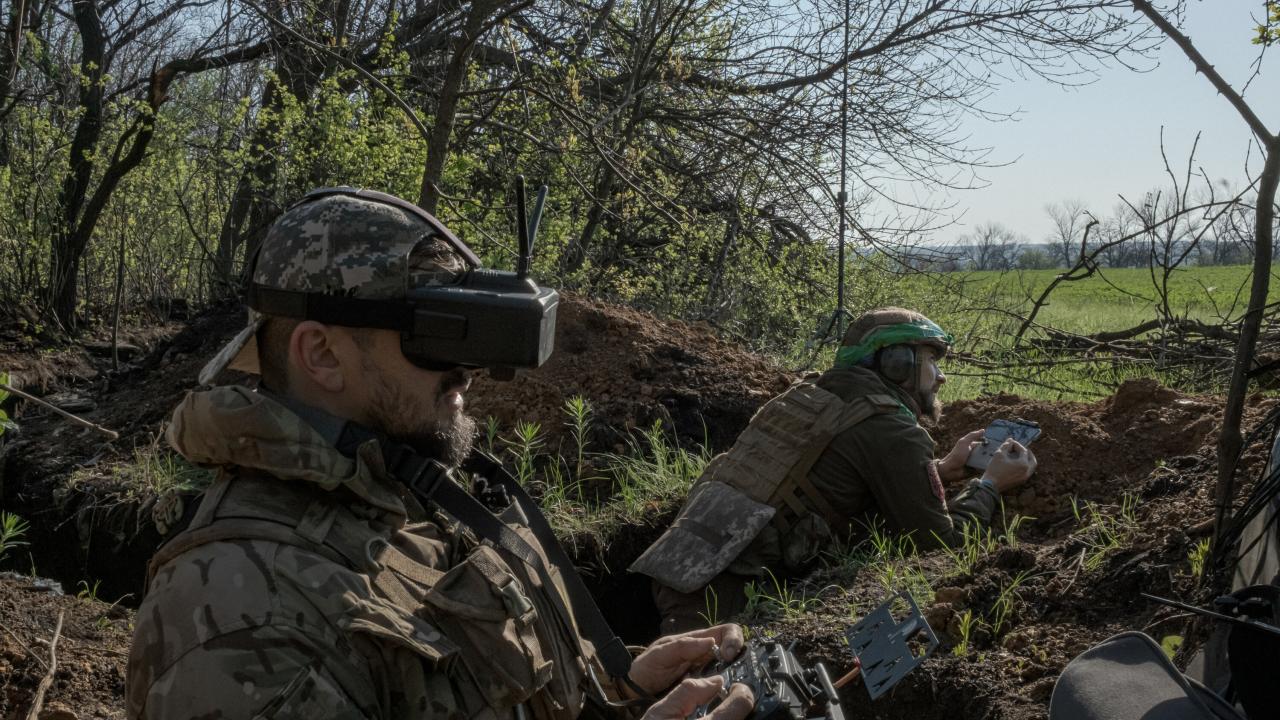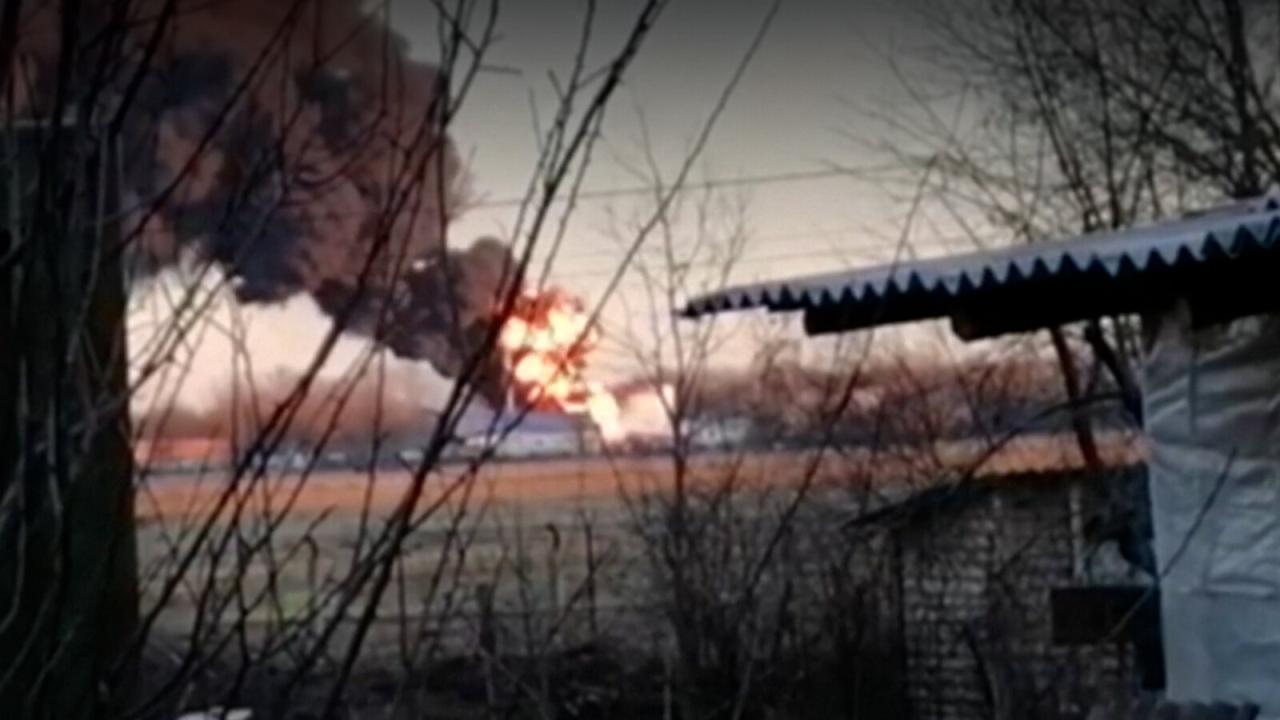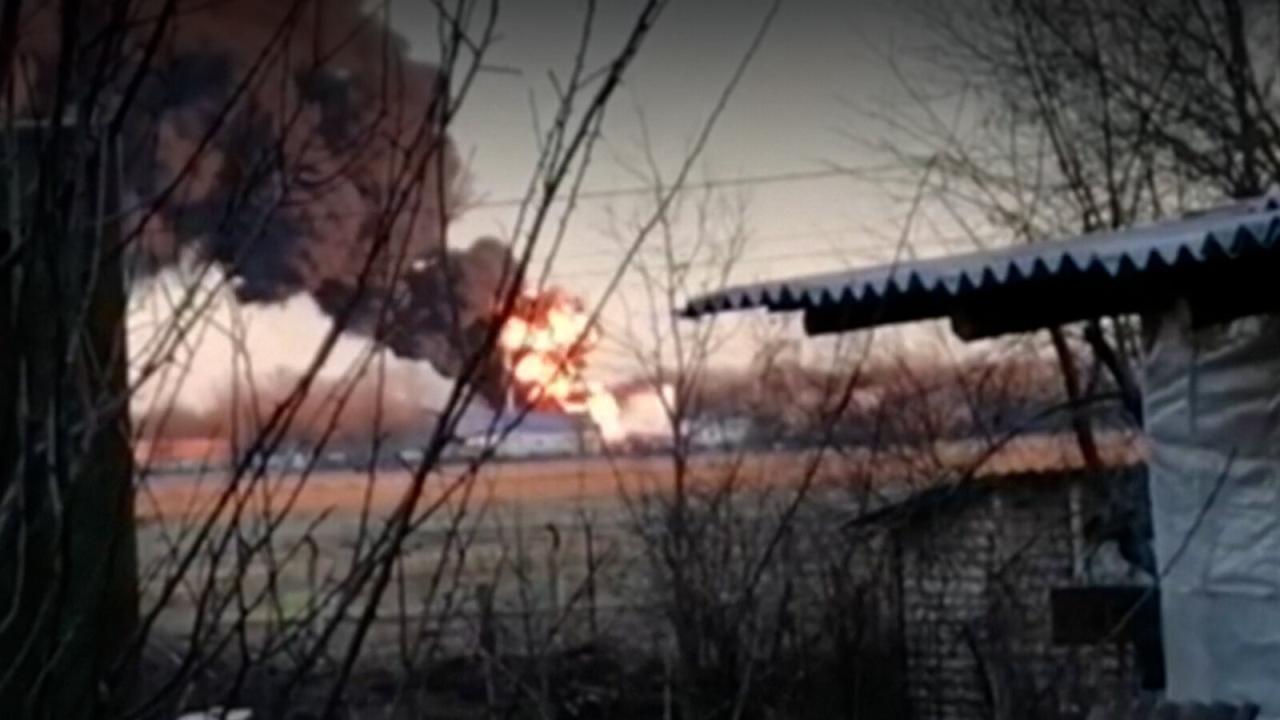Ukraine drone attack on russia – Ukraine drone attacks on Russia represent a significant escalation in the ongoing conflict. This analysis delves into the geographic scope of these attacks, examining the targets chosen and the strategic implications of these choices. We will explore the types of drones employed, their capabilities, and the effectiveness of Russian countermeasures. Furthermore, we will consider the international ramifications and the impact on civilian populations, painting a comprehensive picture of this evolving aspect of the war.
The frequency and audacity of these drone incursions have raised significant questions regarding the effectiveness of Russian air defenses, the technological capabilities of Ukrainian forces, and the potential for further escalation. Understanding these attacks is crucial to grasping the evolving dynamics of the conflict and its potential consequences for regional and global stability.
Geographic Scope and Targets of Ukrainian Drone Attacks on Russia
Ukrainian drone attacks on Russian territory have demonstrated a notable geographic reach and a strategic pattern in target selection. These attacks, while posing logistical challenges, have impacted various regions and target types, significantly influencing the conflict’s dynamics.
Geographic Distribution and Target Selection
The geographic distribution of Ukrainian drone attacks on Russia is not uniformly spread. Certain regions appear to be targeted more frequently than others, suggesting a deliberate strategy. The following table provides a snapshot of reported attacks, though the exact number and details remain subject to ongoing verification and reporting inconsistencies.
| Region | Date of Attack (Approximate) | Target Type | Estimated Damage |
|---|---|---|---|
| Belgorod Oblast | Multiple dates in 2023 | Military infrastructure, fuel depots, civilian infrastructure | Varying, from minor damage to significant destruction |
| Bryansk Oblast | Multiple dates in 2023 | Military installations, oil refineries | Reports of damage and disruption, specific details vary |
| Krasnodar Krai | Several instances in 2023 | Oil refineries, drone attacks near military bases | Varying degrees of damage reported |
| Moscow | Several instances in 2023 | Primarily attempts to target military airfields and residential areas | Reports of minor damage and disruption |
While military installations are primary targets, the inclusion of civilian infrastructure in some attacks raises concerns about potential civilian casualties and the broader strategic implications. Targeting civilian areas, even inadvertently, can escalate tensions and garner international condemnation. The strategic implications of targeting choices hinge on the balance between achieving military objectives and minimizing civilian harm, and the potential for escalation.
Logistical Challenges of Drone Attacks

Launching drone attacks from Ukraine to various locations within Russia presents significant logistical challenges. The distances involved, the need for precise navigation, and the risk of interception by Russian air defenses all contribute to the complexity of these operations. The flight paths would likely involve navigating around Russian air defense systems, utilizing varied altitudes and terrain to evade detection.
A hypothetical map illustrating potential flight paths would show varying distances and routes depending on the launch point in Ukraine and the target location within Russia. Longer-range drones would be necessary for reaching more distant targets, adding to the complexity of the operation.
Types of Drones Used and Their Capabilities
A variety of drones, both commercially available and potentially modified, have reportedly been used in the attacks. Their effectiveness varies depending on factors like range, payload, and guidance systems.
Drone Specifications and Effectiveness
- Drone Type 1 (Example: Altius-600): Long range, relatively high payload capacity, GPS-guided. Reportedly used in attacks on distant targets. Success depends on evading air defenses. Successful attacks have been reported on military infrastructure in certain regions.
- Drone Type 2 (Example: modified commercial drones): Shorter range, limited payload capacity, often reliant on pre-programmed flight paths or manual control. Their success hinges on proximity to the target and the ability to evade detection. Examples of both successful and unsuccessful attacks are reported, mostly involving smaller targets closer to the border.
- Drone Type 3 (Example: UAVs with explosive payloads): Designed for offensive capabilities, their effectiveness depends on the precision of targeting and the strength of the payload. Successful attacks on specific infrastructure have been reported, but data remains limited and often contested.
The effectiveness of different drone models is heavily influenced by factors like Russian air defenses, weather conditions, and the skill of the operators. Successful attacks often involve careful planning, precise navigation, and exploitation of vulnerabilities in Russian defenses. Unsuccessful attacks frequently result from detection and interception by Russian air defense systems.
Technological Advancements and Limitations
The drones used in these attacks showcase a combination of commercially available technology and potential modifications. Reported adaptations include increased range through software modifications or the addition of auxiliary fuel tanks. Limitations include vulnerability to electronic warfare, limited payload capacity in some models, and the challenge of overcoming sophisticated air defense systems. Further technological advancements, such as improved stealth capabilities or more resilient guidance systems, could significantly enhance the effectiveness of future attacks.
Russian Response and Defense Mechanisms

Russia has implemented a range of measures to counter Ukrainian drone attacks. However, the effectiveness of these measures varies, and the economic and military implications of the defensive effort are significant.
Russian Countermeasures
| Defense Mechanism | Effectiveness | Limitations | Examples of Use |
|---|---|---|---|
| Air Defense Systems (e.g., Pantsir-S1) | Varied; effective against some drones, but not all | Limited range, vulnerability to electronic warfare, high cost | Deployment around major cities and military installations |
| Electronic Warfare Systems | Can disrupt drone communications and navigation | Effectiveness depends on the drone’s resilience and the sophistication of the EW system | Jamming signals, disrupting GPS guidance |
| Anti-drone systems (e.g., mobile jammers) | Effective at shorter ranges against smaller drones | Limited range, requires close proximity to the target | Used in protecting critical infrastructure and high-value targets |
The effectiveness of Russia’s response has been mixed. While some attacks have been successfully intercepted, others have reached their targets, indicating vulnerabilities in Russia’s defense systems. The resources dedicated to countering drone attacks represent a significant economic and military burden, diverting resources from other areas. The constant need for upgrades and improvements to counter evolving drone technology adds to the ongoing cost.
International Implications and Reactions

The Ukrainian drone attacks on Russia have elicited diverse international reactions, highlighting the complexities of the conflict and its global implications.
International Response
The international community’s response has been varied. Some countries have expressed concerns about the potential for escalation, while others have remained largely silent. International organizations have issued statements calling for de-escalation and the protection of civilians. The attacks have strained relations between Russia and Ukraine’s allies, further complicating the already tense geopolitical landscape. The potential for accidental escalation, due to miscalculation or misidentification, is a significant concern.
Hypothetical Escalation Scenario
A hypothetical escalation scenario could involve a major drone attack causing significant damage or casualties in Russia, prompting a retaliatory response from Russia that goes beyond the current level of conflict. This could involve cross-border strikes targeting Ukrainian infrastructure or military positions, leading to a significant escalation of the conflict. The international response to such escalation would likely involve increased sanctions against Russia, potentially further isolating it on the global stage, and heightened diplomatic efforts to de-escalate the situation.
The risk of wider involvement of other countries is a major concern.
Impact on Civilian Populations
While military targets are the primary focus, the impact of drone attacks on civilian populations in Russia cannot be ignored. The psychological effects, alongside potential casualties and displacement, warrant attention.
Humanitarian Consequences and Public Opinion, Ukraine drone attack on russia
The impact on civilian populations is a complex issue. While the direct casualties from drone attacks may be relatively low compared to other aspects of the war, the psychological impact of such attacks should not be underestimated. The fear and uncertainty generated by the attacks can have significant consequences on mental health and overall well-being. Reports of damage to civilian infrastructure, even if unintended, have also raised concerns about the humanitarian consequences.
The response from humanitarian organizations is largely limited due to access restrictions and the ongoing conflict. Public opinion in Russia, shaped by state-controlled media, is likely divided, with some expressing support for the government’s response and others expressing concern about the attacks and their implications.
Internationally, public opinion is also divided, reflecting differing perspectives on the conflict and the legitimacy of the drone attacks. The issue highlights the ethical dilemmas inherent in warfare and the importance of minimizing harm to civilians.
Ukraine’s recent drone attacks on Russian territory have significantly escalated tensions. One notable incident, shedding light on the evolving tactics, involved the kazan drone attack , highlighting the increasing range and sophistication of Ukrainian drone operations. These attacks underscore the ongoing conflict’s dynamic nature and the potential for further escalation in the coming months.
The use of drones in the Ukraine-Russia conflict marks a turning point in modern warfare, highlighting the increasing accessibility and effectiveness of unmanned aerial vehicles. While the attacks have undoubtedly caused disruption and damage within Russia, their long-term strategic impact remains to be seen. The international community’s response, coupled with Russia’s evolving defensive strategies, will shape the future trajectory of this increasingly complex conflict.
Recent Ukrainian drone attacks on Russian territory have highlighted the increasing sophistication of unmanned aerial vehicles in modern warfare. The technology involved is remarkably similar to that used in civilian applications, such as the high-resolution imagery provided by the cobequid pass camera , which offers a fascinating contrast to the destructive potential seen in the conflict. These attacks underscore the evolving nature of drone technology and its implications for both military and civilian uses.
The continued analysis of these attacks is critical to understanding the evolving dynamics of the war and its potential consequences.
Recent drone attacks on Russia by Ukraine highlight the evolving nature of modern warfare. The sophisticated technology involved is a stark contrast to the more entertainment-focused applications, such as those showcased at the impressive orlando drone show , which demonstrates the versatility of drone technology. However, the Ukrainian drone attacks underscore the increasingly serious implications of this technology in global conflict.
Frequently Asked Questions: Ukraine Drone Attack On Russia
What is the estimated cost of these drone attacks to Ukraine?
Precise figures are unavailable due to the classified nature of military spending. However, the cost likely involves significant investment in drone procurement, maintenance, training, and intelligence gathering.
Are there any international laws prohibiting these attacks?
The legality of these attacks is complex and subject to differing interpretations of international humanitarian law. The key considerations involve the targeting of military versus civilian infrastructure and the principle of proportionality.
What types of damage have these drone attacks caused in Russia?
Reported damage has ranged from minor property damage to significant infrastructure damage, depending on the target and the type of drone employed. Casualties have also been reported, though the exact numbers remain contested.
How does Russia’s response compare to other countries’ responses to drone attacks?
Russia’s response is unique due to the scale and proximity of the attacks. Comparisons with other countries’ responses to drone attacks are difficult due to varying geopolitical contexts and technological capabilities.
